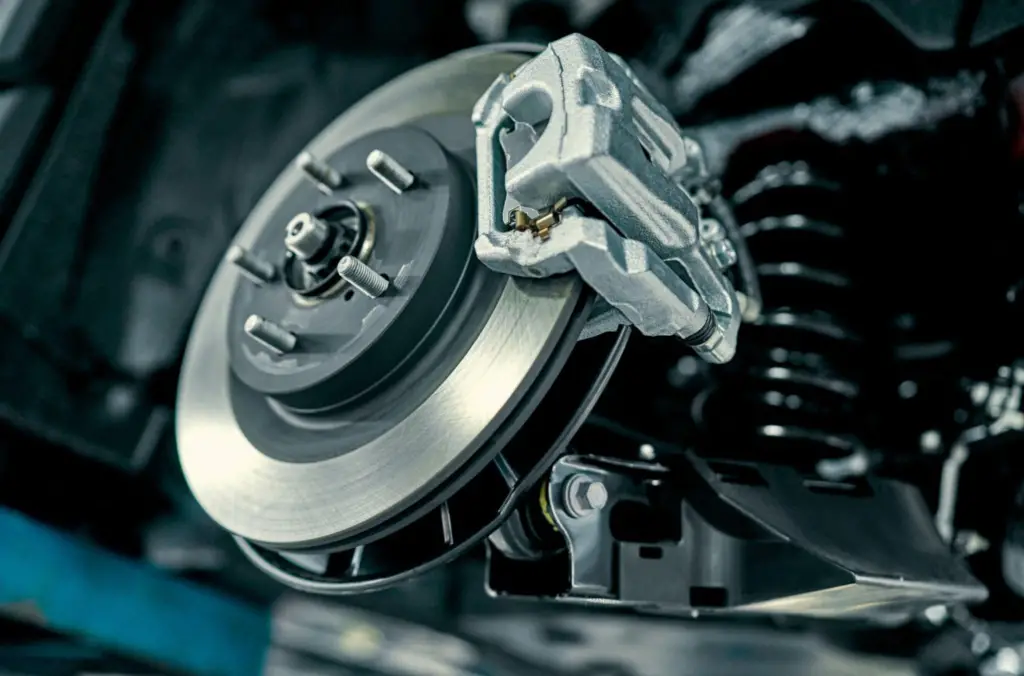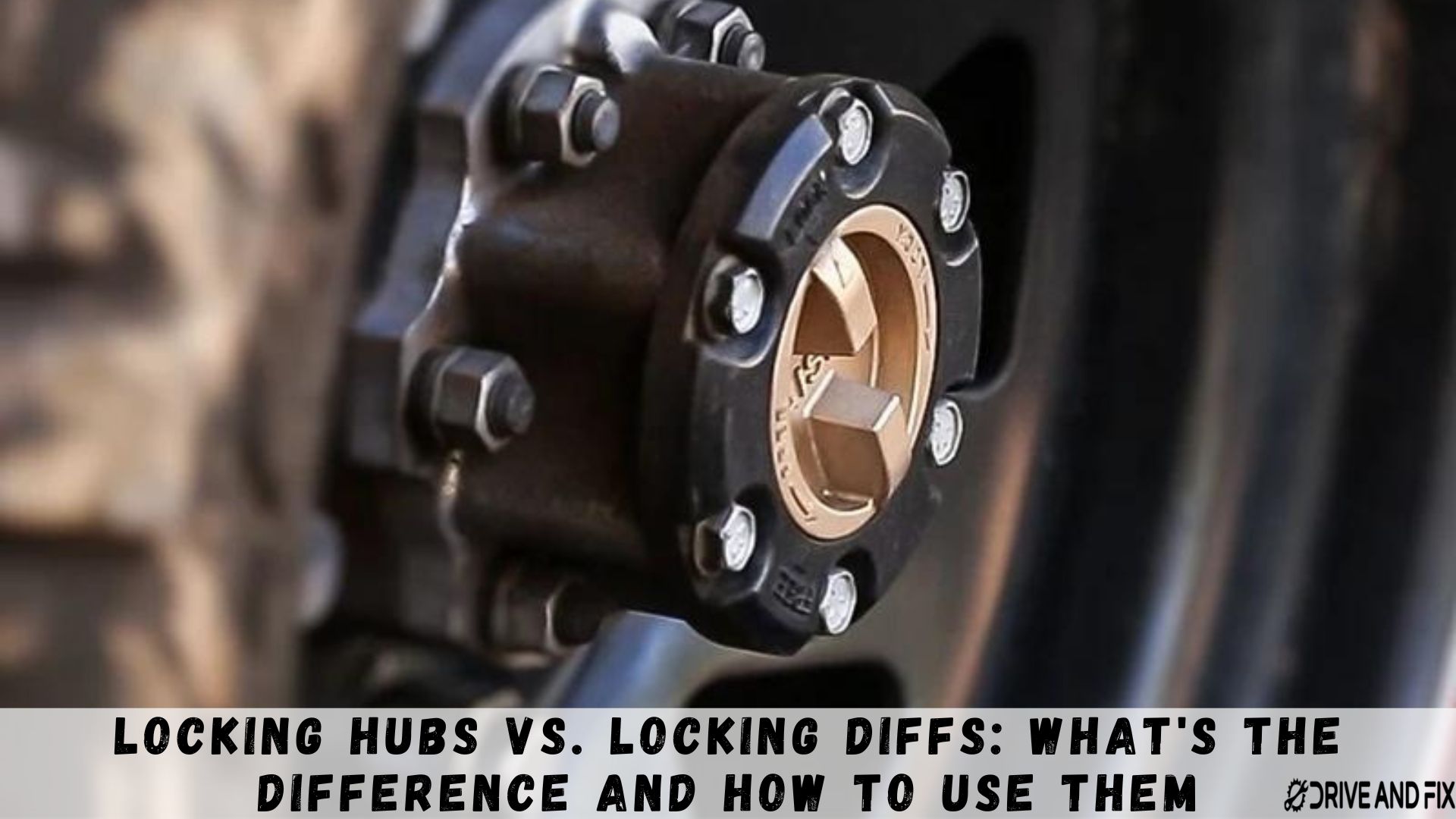Wondering how some vehicles tackle the most challenging terrains, from muddy swamps to rocky mountains, without getting stuck or losing traction? How do they keep moving forward when one or more wheels are spinning in the air or slipping on the ground? The secret lies in two ingenious devices that can transform the performance and capabilities of any vehicle: locking hubs and locking diffs.
Locking hubs vs. locking diffs allow the driver to control how the power and torque from the engine are distributed to the wheels. By engaging or disengaging them, the driver can optimize the vehicle’s traction, stability, and efficiency in different situations. Locking hubs and locking diffs can make a huge difference in off-road driving, where the terrain is unpredictable and challenging.
But what exactly are locking hubs and locking diffs, and how do they work? What are the benefits and drawbacks of having them on your vehicle? How do you choose between them or use them together? Stay here as we answer these questions, comparing and contrasting locking hubs and locking diffs in detail to discover how these amazing devices can help you conquer any road.
Locking Hubs vs. Locking Diffs: Comparing and Contrasting

Function: How do they affect the power and torque distribution to the wheels?
Locking hubs allow the driver to engage or disengage the front wheels from the front drive shafts. When the hubs are locked, the front wheels are connected to the drive train and receive power from the engine. When the hubs are unlocked, the front wheels spin freely without spinning the drive shaft. Locking diffs allow the driver to lock or unlock the differential in the middle of an axle.
When the diff is locked, both wheels on an axle receive equal torque and spin at the same speed, regardless of the traction available to each wheel. When the diff is unlocked, the differential allows the wheels to spin at different speeds according to the terrain and steering angle.
Locking hubs and locking diffs have different functions, but they can work together to optimize the traction and performance of a vehicle in off-road conditions. By locking both the hubs and the diffs, the driver can ensure that all four wheels receive maximum power and torque from the engine and overcome any obstacles or slippery surfaces. By unlocking either the hubs the diffs, or both, the driver can reduce the stress on the drive train and improve the fuel efficiency and handling of the vehicle on normal roads.
Benefits: What are the advantages of having them in different terrain and weather conditions?
Locking hubs
- They reduce the wear and tear on the front axle and drive shaft by disconnecting them from the wheels when not needed.
- They improve fuel efficiency by reducing the drag and resistance caused by spinning unnecessary components.
- They enable the use of a cheap and simple locker in the front differential, such as a lunchbox locker or a Detroit locker, without affecting the on-road manners and steering of the vehicle. These lockers automatically lock and unlock the differential according to the torque applied, but they can cause some noise and jerkiness when turning on the pavement. By unlocking the hubs, these lockers are deactivated and do not interfere with normal driving.
Locking diffs
- They increase the traction and stability of a vehicle by ensuring that both wheels on an axle receive equal power and torque, regardless of the traction available to each wheel. This helps to overcome situations where one wheel is spinning in the air or slipping on mud or sand while the other is not moving.
- They enhance the performance and capabilities of a vehicle by allowing it to tackle more difficult terrains, such as rocky hills, deep snow, or steep slopes. Locking both the front and rear diffs, a vehicle can achieve a true four-wheel drive mode, where all four wheels work together to move forward.
- They provide more control and flexibility to the driver by allowing them to choose when to lock or unlock the diffs according to their needs and preferences. A switch or a lever manually operates some lockers, while others are automatically activated by air or electricity. The driver can decide when to use them depending on their situation and driving style.
Drawbacks: Disadvantages of having them in terms of performance, maintenance, and fuel efficiency

Locking hubs
- They may require manual operation by getting out of the vehicle and turning a knob on each wheel hub. This can be inconvenient and time-consuming, especially in bad weather or dangerous situations. Some vehicles have automatic locking hubs that engage or disengage when shifting into or out of four-wheel drive mode, but they can be less reliable and more prone to failure than manual ones.
- They can compromise the strength and durability of the axle shafts by introducing a weak point at the hub connection. If a hub fails or breaks under stress, it can cause damage to other components or leave the vehicle stranded. Some aftermarket hubs are more robust than stock ones but can also be more expensive and harder to find.
- They can limit the options for upgrading or modifying the axle assembly by restricting compatibility with different lockers, gears, or shafts. Some lockers or gears may not work well with certain hubs or require additional modifications or accessories to function properly.
Locking diffs
- They can affect the handling and steering of the vehicle by creating a binding effect when turning on hard surfaces. When the diff is locked, both wheels on an axle must spin at the same speed, but this is not possible when taking a corner, as the inner wheel travels a shorter distance than the outer one. That causes the tires to skid or hop or the axle shafts to twist or break. The driver must unlock the diffs before turning on pavement or smooth roads to avoid this.
- They can increase the stress and wear on the drive train and tires by transferring more torque and power. When the diff is locked, both wheels on an axle receive equal torque, but this may be more than what they can handle, especially if they have different sizes or pressures. This would cause the tires to overheat or wear out faster or the drive train components to break or malfunction. To prevent this, the driver must use appropriate tires, maintain them properly, and regularly check the drive train for any signs of damage or failure.
- They can cost more money and time to install and maintain than open diffs. Locking diffs are more complex and sophisticated than open diffs, requiring more parts and labor to install and operate. Some lockers are cheaper and easier to install than others, such as lunchbox lockers or spools, but they may also have more noise, reliability, or compatibility drawbacks. Some lockers, such as air or electric lockers, are more expensive and difficult to install than others. Still, they may also have more control, flexibility, or performance benefits.
Compatibility: Can they work together or separately? Do they require any modifications or accessories to function properly?

Locking hubs and locking diffs can work together or separately, depending on the vehicle and the driver’s preferences. Some vehicles have locking hubs and diffs, while others have only one or none. Some drivers prefer locking hubs and diffs for maximum traction and performance in off-road conditions. In contrast, others prefer to use only one or none for better fuel efficiency and handling on normal roads.
Locking hubs and locking diffs may require some modifications or accessories to function properly, depending on each device’s type, model, and brand. Some examples of modifications or accessories are:
- A switch or a lever is used to operate the locking hubs or diffs manually.
- An air compressor or electric wiring to automatically activate the air lockers or electric lockers.
- A stronger axle shaft or a hub conversion kit to replace the weak stock hubs with stronger aftermarket ones.
- A gear ratio change or a tire size adjustment to match the locker’s specifications and optimize the vehicle’s performance.
Verdict
The locking hubs and locking diffs are two mechanisms that improve the traction and performance of a vehicle in off-road conditions. They are not the same thing but can complement each other to optimize the vehicle’s capabilities and flexibility as discussed in our locking hubs vs. locking diffs write-up. Depending on the vehicle and your preferences, you can choose to use both locking hubs and locking diffs, only one or none of them. The choice depends on the type of terrain, weather, and driving style you encounter.
We hope you understand the difference between locking hubs and locking diffs and how they can help you conquer any road.


